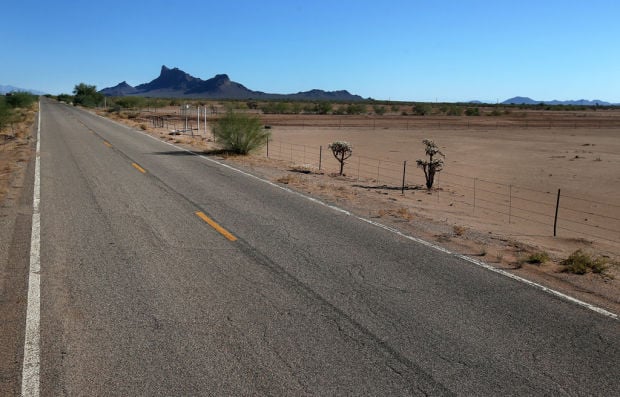CASA GRANDE — The root causes of deadly crashes in dust storms along Arizona’s highways are the dust itself and human behavior, meteorologist J.J. Brost told officials at the 2015 Dust Storm Workshop Thursday.
We can’t “make it rain more,” he said, and “people changing their behavior is equally difficult.”
The workshop, organized for the third year by the National Weather Service and the Arizona Department of Transportation, reported some progress toward making predictions of dust storms more timely and developing more precise ways of warning motorists about approaching dust storms.
The ADOT ad campaign that urges motorists to “Pull Aside, Stay Alive,” has helped to create a growing awareness among Arizona drivers, but it misses two important targets —“the Disneyland travelers” and the “commercial drivers,” said Dianne Kresich, of the ADOT research center who reported the results of an unpublished survey and study.
Department of Public Safety Sgt. John Paul Cartier reported that Arizona’s interstates experienced 566 collisions and 14 fatalities from reduced visibility due to dust from 2008 to 2013.
The worst of them involved commercial trucks that escalated damage from minor collisions, he said. “Here comes that semi-truck at 65 mph and that’s where the most violent collisions occur,” Cartier said.
The Weather Service is improving its ability to pinpoint problems and is working on a plan to install dust monitors, especially along a particularly dusty stretch of Interstate 10 near Casa Grande.
Brost said the Tucson office of the National Weather Service has begun using a more finely detailed model developed by University of Arizona researchers to predict the spots where violent downdrafts could produce small, but deadly areas of blowing dust.
Last year, it successfully predicted five such incidents hours in advance and posted advisories. “I don’t know if it changed behavior,” he said.
Ken Waters, of the Phoenix Weather Service office, is testing prototypes of inexpensive dust detectors that he’d like to deploy every half or quarter mile along the deadly stretches, but they require power and communication availability that doesn’t exist in some of the areas.
A Texas meteorologist reported on a horrific crash last year, just over the Arizona border on I-10.
John Fausett, of the El Paso office of the Weather Service showed a photo of the charred hulks of three semi-trucks, three passenger vehicles and an RV, next to a sign that read “Dust storms may exist.” Seven people died in the crash and fire, he said.
His office had issued a “special weather statement” about the potential for dust in isolated areas, but not a “dust storm alert,” which would have covered a wide swath of unaffected areas.
“We did have something out but the average person doesn’t expect 60-mph gusts and zero visibility,” he said.
The situation could worsen in coming years, said soil scientist James Walworth of the UA.
The soil that is the source of much of the dust is degraded by salts, particularly sodium. It doesn’t clump and is easily airborne.
Some of it has occurred naturally over thousands of years — the Willcox and Lordsburg playas, for instance. Along I-10 between Tucson and Phoenix, the degraded soil is the result of irrigation on now-fallow farmland.
“Soils that won’t create vegetation create dust,” he said. “Left as it is, it will never revegetate. It’s getting worse.”
“Within this corridor in Central Arizona, particularly if Lake Mead continues to drop, we’re going to see a lot less irrigation water available and a lot less agriculture,” said Walworth. He suggested putting gypsum (calcium sulfate) on the affected areas to promote clumping and also contouring the flat ground.
Brost said the problem eludes a solution by any one group and urged the meteorologists, scientists, public safety officials, emergency managers, traffic engineers and others in attendance to continue working together.





